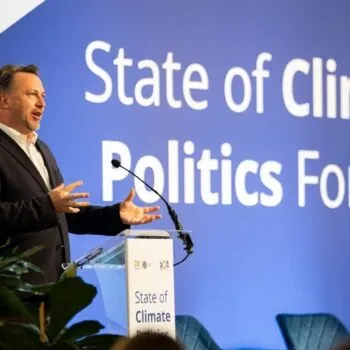The UN climate talks returned from Latin America to Europe last week as 2015’s first negotiating session kicked-off in Geneva. Only a handful of negotiating sessions stand between the close of COP20 in Lima at the end of last year and landing a global agreement at COP21 in Paris in December 2015. Geneva won us a negotiating text and sense of optimism but tough political choices went untouched.
New co-chairs
In Geneva the new co-chairs from Algeria and the US offered parties the opportunity to add text but negotiation and streamlining was off the cards for now. Their confident and consultative approach built trust amongst the parties but they came unstuck by the speed at which parties finished making additions to the text. By Wednesday, with 3 days remaining, discussions became centred on process and conceptual challenges. Some, like the EU, found this approach frustrating but others especially those inside the G77 welcomed the opportunity for reflection on the Geneva text before negotiation could begin.
Geneva Policy focus
The differentiation challenge continued to form the crux of many unresolved policy clashes. Many textual additions were made to reflect different approaches. Brazil, South Africa and Ethiopia were most vocal in confronting differentiation by proposing suggestions to cater for the challenge within the text. But in the corridors there was broad consensus that ultimately the differentiation challenge would need to be resolved at a higher political level.
The emissions phase out goal was reiterated and retold by a number of countries who made the link to the IPCC science. Jamaica and AOSIS proposed the most ambitious trajectory with a high likelihood of 2C. The EU also proposed a 2C compatible trajectory but it came burdened with a lower likelihood and dependency on significant negative emissions. It is clear that there is a growing momentum around having a global decarbonisation target.
Loss and damage was another policy area that received increased attention. Developing countries demonstrated a concerted effort to bump loss and damage up the agenda with a number of textual additions. Developed countries remained silent on the issue leaving a landing point for the final agreement very uncertain.
The cycles for commitments and review also had their time in the spotlight. Although parties didn’t make any firm decisions the productive engagement and flexibility sent positive signals. This was the first operational and serious discussion about the review cycles, an important first step to creating a more ambitious international architecture that is durable.
Next steps
Parties agreed that streamlining would begin at the next session in Bonn in June. Spin out groups (no more than 2 at a time) will be deployed to handle tricky issues and then report back to plenary. And parties who have similar propositions will work together to agree compromise text. Before June the co-chairs have pledged to once again engage in consultation with parties and a scenario note will be shared well in advance to allow for adequate preparation.
The next session will also be the first after the quarter one deadline for initial mitigation contributions. Not all will submit by this point but major economies are expected to. The EU and US have declared their intention and China is under pressure to follow suit. These contributions will give the earliest formal indication of how 2°C compatible the Paris mitigation round will be. Unless positions radically shift their collective shortfall is likely to increase pressure on adaptation, finance, ratchet and rules in Bonn.



